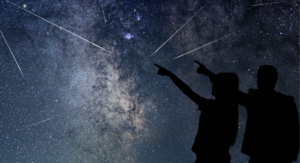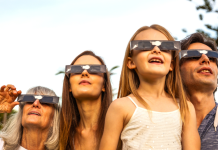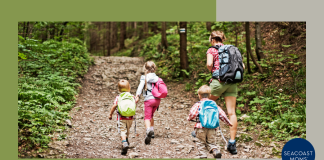November is one of the best months for children to practice their night sky viewing. It gets dark so early in the evening that you can get an hour or more of stargazing on the Seacoast before bedtime. Here are some ways to build your family’s night sky knowledge and take advantage of Seacoast stargazing opportunities. Kids and astronomy can go hand in hand!
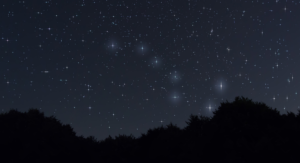
Find the Big Dipper and the North Star
A great way to introduce night sky viewing is to find a recognizable celestial object. The perfect beginning task is to find the Big Dipper. This is visible all night in the northern sky. Start by going to an open area on a clear night- sports field, hill, beach, or farm away from town and city lights. Use a compass (or your phone) to face north. The Big Dipper is part of the constellation Ursa Major (Big Bear). It is always visible in the northern sky and changes position throughout the night as it appears to rotate around Polaris, the North Star.
A fun task is to use this link to create a star clock together and then practice using it! This helps children identify that the Big Dipper changes position throughout the night and throughout the year.
From the Big Dipper, you can find Polaris, the North Star. Find the last two stars in the cup of the Big Dipper. Connect these stars and draw a line toward the north. The first star you reach on this line is Polaris. As you become more familiar with these objects, move onto more difficult ones – Cassiopeia, Taurus, and Orion.
Watch a Meteor Shower
November will have two visible meteor showers. The first, the Taurid meteor shower will be visible November 4-6. You will literally be able to view fireballs in the night sky! The best viewing will be early in the morning, just before dawn with clear skies. Expect to see a few meteors per hour. The second, the Leonid meteor shower will be most visible November 16-18. Again, meteors are most visible in the early morning and you can expect to see up to ten meteors per hour!
Visit UNH Observatory for a Public Viewing
University of New Hampshire has an amazing telescope and observatory. The first and third Saturday of every month they offer free public viewing sessions from 8-10 pm and is advertised as a great family outing. This means it will be November 2 and 16. Check out their website for up to date information.
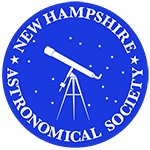
Attend a NHAS Sky Watch
The New Hampshire Astronomical Society is a non profit that provides free educational programs and resources to New Hampshire. They have frequent Seacoast presentations that are available to the public. Most Sky Watch programs offer a indoor educational presentation followed by night sky viewing through telescopes. I have seen amazing things at their programs including planets, star clusters, and galaxies! Their website calendar provides updates on programs. In November, they are offering a free Seacoast sky watch program at Seapoint Beach with Kittery Land Trust on November 7 from 7-9 pm (rain date November 19).
You might have seen this group in Portsmouth since they also offer monthly sidewalk astronomy in Portsmouth on the first Saturday of the month. Catch them in Market Square on November 2 or December 7 from 6-10 pm.
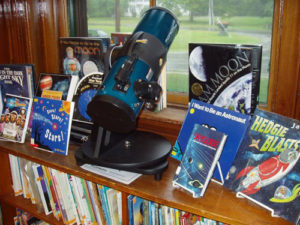
Borrow a Telescope from your Local Library
The New Hampshire Astronomical Society has an amazing program that allows families to borrow quality telescopes for free at local libraries. For a complete list along with information and videos, check out their website. Does your library have one to borrow? Some of the participating Seacoast libraries are: Barrington, Dover, Durham, Exeter, Epping, Greenland, Hampton Falls, Lee, Newmarket, Rye, and Seabrook.


